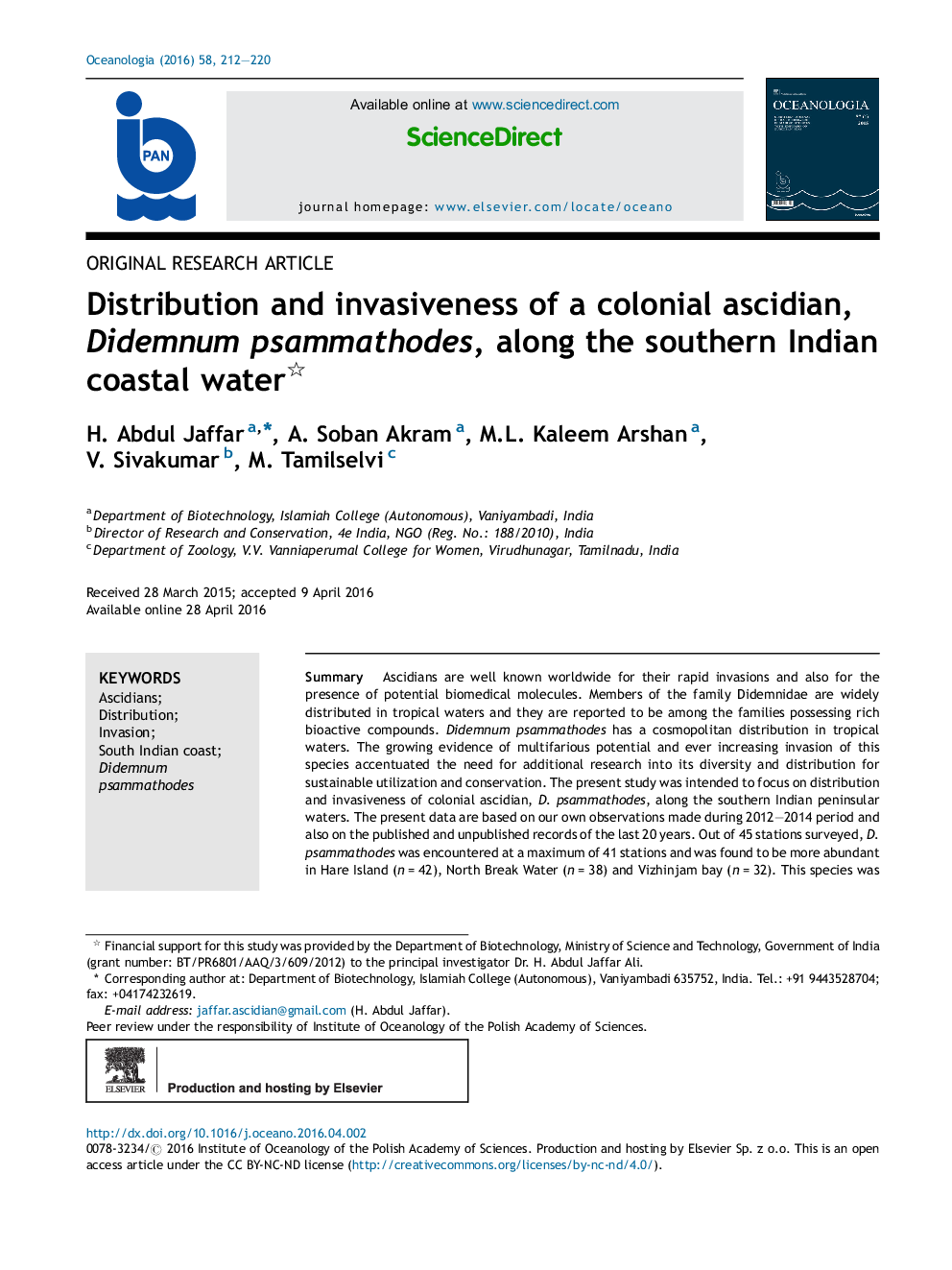| Article ID | Journal | Published Year | Pages | File Type |
|---|---|---|---|---|
| 2069669 | Oceanologia | 2016 | 9 Pages |
SummaryAscidians are well known worldwide for their rapid invasions and also for the presence of potential biomedical molecules. Members of the family Didemnidae are widely distributed in tropical waters and they are reported to be among the families possessing rich bioactive compounds. Didemnum psammathodes has a cosmopolitan distribution in tropical waters. The growing evidence of multifarious potential and ever increasing invasion of this species accentuated the need for additional research into its diversity and distribution for sustainable utilization and conservation. The present study was intended to focus on distribution and invasiveness of colonial ascidian, D. psammathodes, along the southern Indian peninsular waters. The present data are based on our own observations made during 2012–2014 period and also on the published and unpublished records of the last 20 years. Out of 45 stations surveyed, D. psammathodes was encountered at a maximum of 41 stations and was found to be more abundant in Hare Island (n = 42), North Break Water (n = 38) and Vizhinjam bay (n = 32). This species was absent at four different stations. Catch per unit effort was higher (19.6) in Hare Island followed by NBW (16.0) and Vizhinjam bay (6.8). The highest number of colonies (136) was observed in calcareous stones, followed by embedded rocks (54) and molluscan shells (33). Hydrographical parameters showed no significant differences between the stations (p < 0.005). It is concluded that D. psammathodes has the potential to invade most of the stations and its distribution was not influenced by hydrographical parameters rather than substrates.
